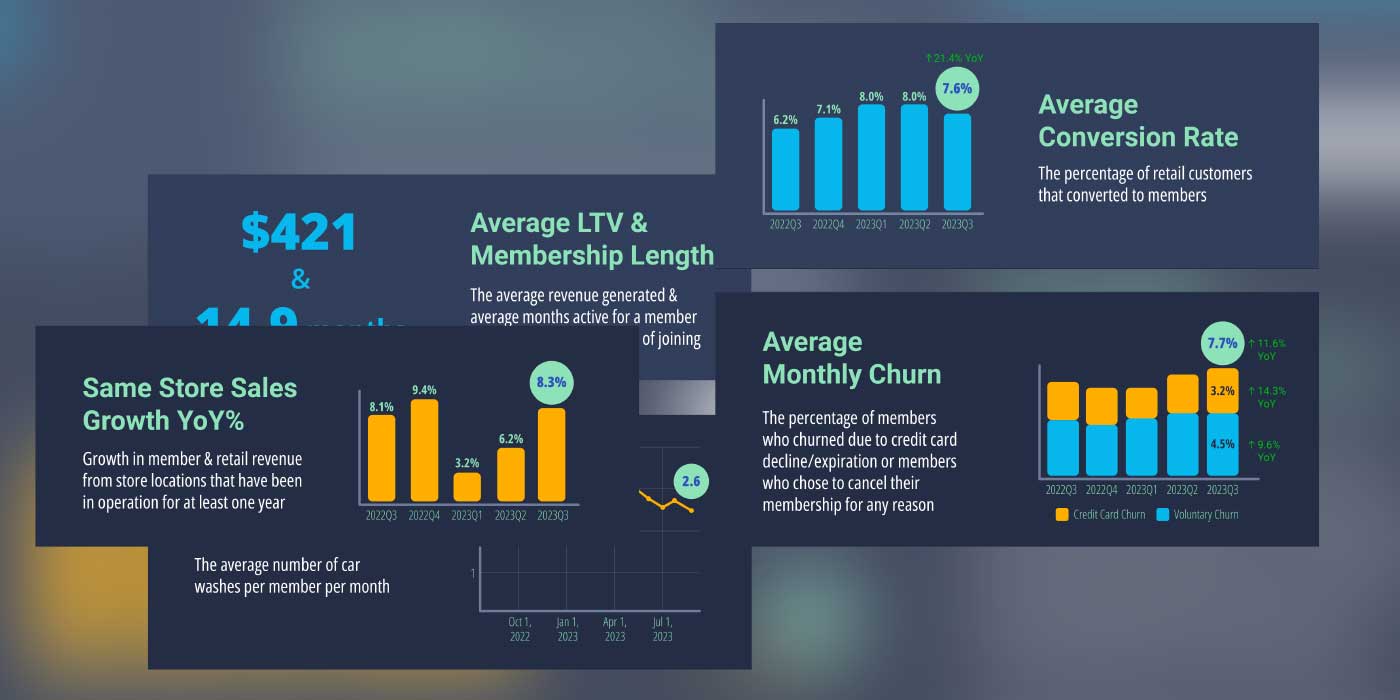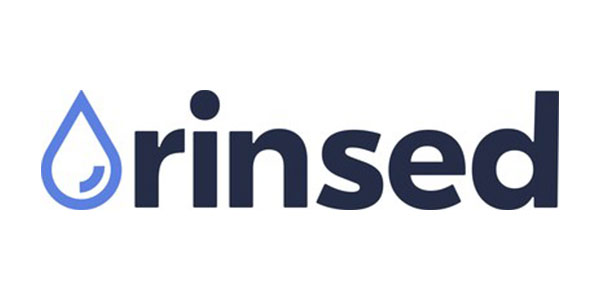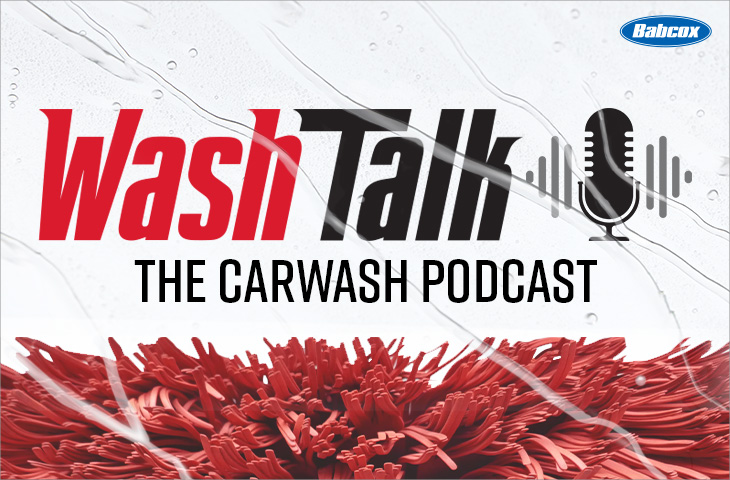The emergence of the wash club membership is changing the carwash business model from one that was dependent on nice weather, spilled cereal and impulse visits to repeatable, dependable revenue. For frequent customers, unlimited wash programs offer value and a cost savings. Therefore, in theory, it’s a win-win situation without question.
The carwash market and its customers are still in the testing out stage since prevalent subscription-based purchasing is only a relatively new consumer option and preference. This leaves many interested operators with more questions about membership than answers, at least at the moment.
How many members should you have? What should the monthly price be? How much time, resources and added labor are required to run a successful membership program? What’s LPR, and is RFID better? What are the most effective sales and marketing strategies to use?
“The most important question is going to be what do you need more of? Is it cash, customers or to keep up with your competition? If your operation needs to increase the number of customers coming through the wash, for example, setting up an unlimited membership program can help you attract new customers,” inserts Craig Kjorlien, sales at WashCard.
We reached out to several experts in the field to get answers to some of these questions and others.
Find them in the club
While widespread use of a subscription-based membership model is relatively new to the carwash market, companies have been researching the trend for decades and — also drawing from previous experience in other markets — conclusions and benchmarks are starting to come to the forefront.
Companies are equipping operators with the tools and information they need to be successful at converting pay-per-visits into members. This includes the use of sales intelligence. “With sales intelligence, when a customer enters the lot and you are able to capture the license plate, by the time he or she pulls up to the attendant, selling membership becomes a much different and easier sales pitch,” informs Scott Pashley, CRO for EverWash.
Knowing more information about the customer, such as their membership history, frequency of visits, if they’re a new customer, responded positively to a marketing campaign and so on, helps employees deliver better value statements and prevents pitch fatigue, adds Pashley.
“Using sales intelligence and being able to deliver the right pitch to the right person and at the right time … it has been huge for us,” says Pashley.
Leveraging the use of sales intelligence and other best practices, Pashley’s company works with hundreds of operator partners. Each day, these washes aim for a 10% conversion rate, turning nonmembers into members. “Really good operators can achieve 20%,” remarks Pashley.
Price point and pitfalls
Industry recommendations of membership pricing range in the area of 1.5 to 2.5 of your base wash price. Research on an effective pricing strategy for your specific wash are still ongoing and meaningful data could be available soon. What experts do know now is that once an unlimited monthly membership rate is decided on, it should follow a set it and forget it approach.
“Membership needs to be priced right, marketed in a way that drives an immediate response on-site and enabled by technology to stimulate action,” sums up Chad Bartlett, senior marketing manager for NCS Vehicle Care. “In early stages of the membership journey, it’s important to present the membership offering clearly and simply put with signage and consumer touchpoints aligned to the wash experience.”
Remember, the unlimited plan is one that is reliant on delivering value. You want customers to feel like they “gotcha” every month so they keep renewing.
“If the membership pricing is too high, the consumer will be more conscious of what value they are getting on a monthly basis and if it’s worth the expense. From there, consistent results are critical so the consumer doesn’t second guess his or her membership based on the service provided. Finally, competitive pressure may create a need of differentiation in some regard to keep members loyal, including additional personal touchpoints and creating a community of exclusive offers with members,” notes Bartlett.
Oh, what a night … every night
In order to be successful at membership, experts say operators need to rid their businesses of old ways of doing things. In particular, they say, promos like “early bird special” and “ladies’ night” must be phased out.
“The subscription economy is the way of the future,” remarks Pashley. “The mistake operators make is that they don’t dive fully into the culture of membership. If you decide to do membership, you have to stop doing things like ‘ladies’ night,’ which is a direct competitor to your membership program. Every night is ladies’ night when you have membership.”
Membership success comes when you can create need and value for the customer. Reaping the rewards of the program means not only do you need customers to buy in, but the owner and employees need to be “all in” as well.
“The operator needs to be prepared to focus attention and goals around driving membership, which includes ensuring a consistent wash process, resetting marketing and signage to educate and promote membership in the respective zones of the wash to encourage awareness and sign-ups, and aligning the wash staff and technology to actively sell memberships,” explains Bartlett.
Club bouncers
With a conversion rate goal of 10% daily, as noted earlier, what attrition should operators expect? Kjorlien’s company is seeing its partners grow and then maintain a certain level, adding and losing members for various reasons along the way.
“We have found that the average in-bay automatic sees about 100 members per lane and the reasons that people leave vary, including moving, buying a new car, losing a job or simply because they don’t use it. Growth and loss will happen. As an operator, it’s important to understand why you have customers coming and going. If you have major drop off rates all of a sudden, knowing why that is can help you understand how to make changes to your programs in the future and prevent such losses. It’s all about understanding your customers. Each demographic is going to have different preferences and ideas of what works best for them,” Kjorlien says.
The trick is making customers fans of the program and that is critically important in the early stages of membership. In order to minimize attrition, Pashley suggests carefully monitoring a member’s first month of usage.
“We know that when a customer uses the carwash three times in the first month of being a member, the average duration for that person is over 11 months as a member,” educates Pashley, noting that this average is five to six times longer than noted industry averages for membership. “Hitting customers with marketing messages in that first month is so critical.”
Hope for sticky situations
Pashley’s company’s research is also starting to uncover the power of friend and family referrals. Of course, word of mouth helps drive more members and volume to your site, but the effect of referrals on the initial existing member is eye-opening for sure.
“Getting a member to add an additional vehicle to the plan makes them sticky,” confirms Pashley. “What we’re seeing is that the second vehicle uses the plan 30% less than the first vehicle. In addition, when a customer adds an additional vehicle to the family plan, we see almost 20% less churn among these members.”
While operators should not experiment with pricing as a regular practice, an attractive start-up price is recommended. Also, targeted messages and specials through such channels as email, push notifications and text messaging when people are on-site, encouraging them to add additional vehicles to the plan or refer friends and family, can be highly effective to grow your program.
Kjorlien recommends starting the membership program with a low, attractive price point for “a limited time only,” offering the flexibility to increase as needed without turning customers off with an unexpected rate increase.
“Grand opening specials or initial promotions like ‘first month free’ are good at converting consumers who would likely wash with relative frequency regardless,” concurs Bartlett. “It’s the consumers that are ‘on the fence’ that need more finesse. Educating these consumers on why they need a membership, the benefits of frequent washing and the value they receive for the price should be part of the site messaging and sales foundation that will help drive conversion.”
According to Bartlett, growing membership goes beyond the use of a single sign on the property that reads “Unlimited washing for $19.99,” for instance. “Multiple touchpoints and zones need to be utilized to drive home the call to action,” he adds.
While Bartlett does not recommend tinkering with pricing for experimentation purposes, he does recommend trying out and implementing other strategies to increase sales and member stickiness.
“Add new chemical applications, create new top packages, etc. — it can help introduce a new membership option. Additionally, moving members up to higher packages should be a focus to drive additional revenue versus [increased] pricing. As member percentages grow or markets mature, messaging as well as sales tactics should shift to this growth strategy — how to get more from current members. Education and upselling help consumers understand what they are missing at higher levels and increase the value-add to justify a higher monthly price,” explains Bartlett.
Additionally, once customers are hooked on membership, Pashley highlights the ability to cross-promote your additional services, maximizing your return on membership plan investment.
Nail it with membership
Fortunately, there are technology and systems manufacturers that specialize in carwashing as well as subscription models that can help streamline the implementation, setup and management of your wash’s program. Which leads to another important question operators have before jumping in: How much is all this going to cost?
The experts counter with asking instead: How much are you willing to lose in the long-term if you don’t invest and continue using antiquated strategies to grow and maintain the customer base? The answer to that question might be found on your competitor’s lot in the near future.
According to Kjorlien, there are several processing options available to operators and customers today, regardless of if the customer is a member or not. From RFID to license plate reader (LPR) technology to card- and mobile-based, operators have the ability to work with their partners to customize the right payment and processing programs for their unique businesses.
“Carpenters don’t only carry around a hammer. They have lots of tools that fit the job they need to do. Membership programs are very similar. They can help bring more customers to your wash, but are you also able to accept credit cards and mobile payments, or do you need RFID/LPR to manage your business accounts? Allowing your customers to purchase other services outside of a membership program is crucial to providing all of your customers the best experience at your wash,” says Kjorlien.
When it comes to determining the type of investment needed, it will largely depend on the equipment, software, club potential and budget of your wash. Ensuring the rewarding return of that investment is going to be based on several factors, including proper training, strong communication and sales skills, as well as targeted, strategic marketing.
“You can purchase, install and set up your membership programs, but if you’re not actively promoting your business and programs, gaining success is incredibly difficult,” concludes Kjorlien. “Be prepared to pedal uphill for several months. Most operators who are unsuccessful with membership programs lost out on opportunity because they weren’t actively promoting it or doing the back end work to make it successful.”














